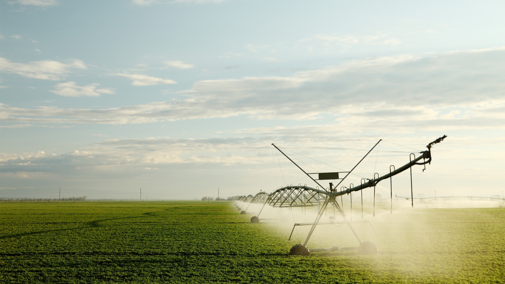Spring Turn-out to Pasture
The time for turn-out to our primary summer pastures is coming soon. A couple of important questions are what date to turn-out, and which pastures should be first.
The driving factors on the amount of grass growth at a specific date varies each year depending on spring temperatures and precipitation. March and April temperatures were above normal for most parts of Nebraska. This spring, nearly all of the state is abnormally dry or in some level of drought. During drought, delaying turn out, if possible, is recommended. This will allow the grass plants to maximize growth given the current soil moisture conditions, and result in greater season-long production.
For mixed cool- and warm-season native grass pastures, it is important to allow the cool-season grasses to reach at least a 3- to 4-leaf stage. Initial grass growth in the spring comes from energy reserves stored in the roots and crowns of the grass plant. Grazing too soon could cause a depletion of those reserves and reduce production because there was not enough leaf area present to adequately begin producing energy from photosynthesis.
When grazing multiple native grass pastures in a rotation, it is beneficial to change the sequence or order of grazing for the set of pastures. This change in the time of grazing each year benefits the overall health and vigor of the grasses. For producers who have both native range and introduced grass pasture such as smooth bromegrass or crested wheatgrass, grazing the introduced grass pastures first is a great approach to use that resource and allows for a later turn-out on the native pastures.
Pre-season Hay Equipment Maintenance
Spring is busy getting crops in the ground, but if much-needed moisture keeps you from the field, take some time to maintain your haying equipment and prevent costly downtime later.
First, inspect, lubricate and service all power-driven areas such as belts, bearings, chains and gears. Set tension on belts and chains. For sicklebar headers, check, sharpen or replace cutterbar sections and adjust wear plates, hold-down clips and guards. Make sure your cutterbar has proper knife register. On disc mowers, replace knives and rotate or replace worn turtles over the knives.
Conditioning rollers often are overlooked. Look for uneven wear and adjust the roll gap, roll timing and roll pressure for your crop.
On round balers, inspect belts, chains, and slats or rollers frequently for wear. Trim frayed edges and repair belts as needed to maintain uniform tension. When not in use, keep belts clean and release belt tension.
Check plunger knife clearance and plunger alignment on square balers and inspect the tying mechanism and adjust as needed. Pick-up teeth on balers and rakes frequently are broken or bent. Replace defective teeth and adjust height if necessary.
Also, be sure you have replacement parts on hand for frequently broken or replaced items. And most important of all, review your owner's manual to identify recommended maintenance procedures and proper settings.
Early Season Alfalfa Irrigation
Ideally, spring alfalfa growth begins with a full soil moisture profile. However, our drier winter and spring moisture conditions have triggered some earlier irrigation in some Nebraska locations. And, since first cutting alfalfa tonnage may be twice as productive compared to any subsequent cutting, early season irrigation may be good.
For maximum production, the first alfalfa cutting typically requires six to seven inches of water. Established alfalfa is a deep-rooted perennial, so the risk of excess water running off fields is low. Also, even if rainfall comes after early spring irrigation, the water will likely be stored in the soil profile for use later in the growing season, when summer heat increases water demand.
During summer heat and rapid plant growth, alfalfa may use over one half inch of water per day. This compares to cooler spring days where water usage may be less than ¼ inch per water per day. Remember that alfalfa is a relatively drought-tolerant perennial that does not have specific critical growth stages for water stress, unlike most traditional crops. When moisture stressed, the plants will slow or stop growing and go dormant. Then, when water becomes available, growth resumes.
Although alfalfa has a longer growing season and annual water usage can be higher compared to other crops, over-watering can result in plant injury and increased disease. Further, irrigation can be challenging due to multiple harvests, preventing watering for about seven to 10 days per growth cycle and frequent heavy equipment traffic compacting soils. To reduce compaction, stop irrigating two to three days before cutting the alfalfa, and irrigate again when alfalfa regrowth begins. Heavy irrigation of alfalfa stubble may also encourage weed growth.
Irrigation scheduling efficiency can be improved by utilizing satellite imaging, ET crop growth gages and soil moisture sensing. Accurate weather forecasts can also allow growers to take full advantage of rainfall and reduce irrigation applications.
As temperatures rise, daily water usage also increases. Generally, the most yield-impacting irrigation occurs just before the second cutting followed by the third and fourth growth periods typically requiring 6 to 7 inches of irrigation. Peak water usage is about 1/3 inch per day in July and August.
Our NebGuide, G1778, “Irrigation Management and Crop Characteristics of Alfalfa” provides more details. Additional resources can be found on UNL Water.

